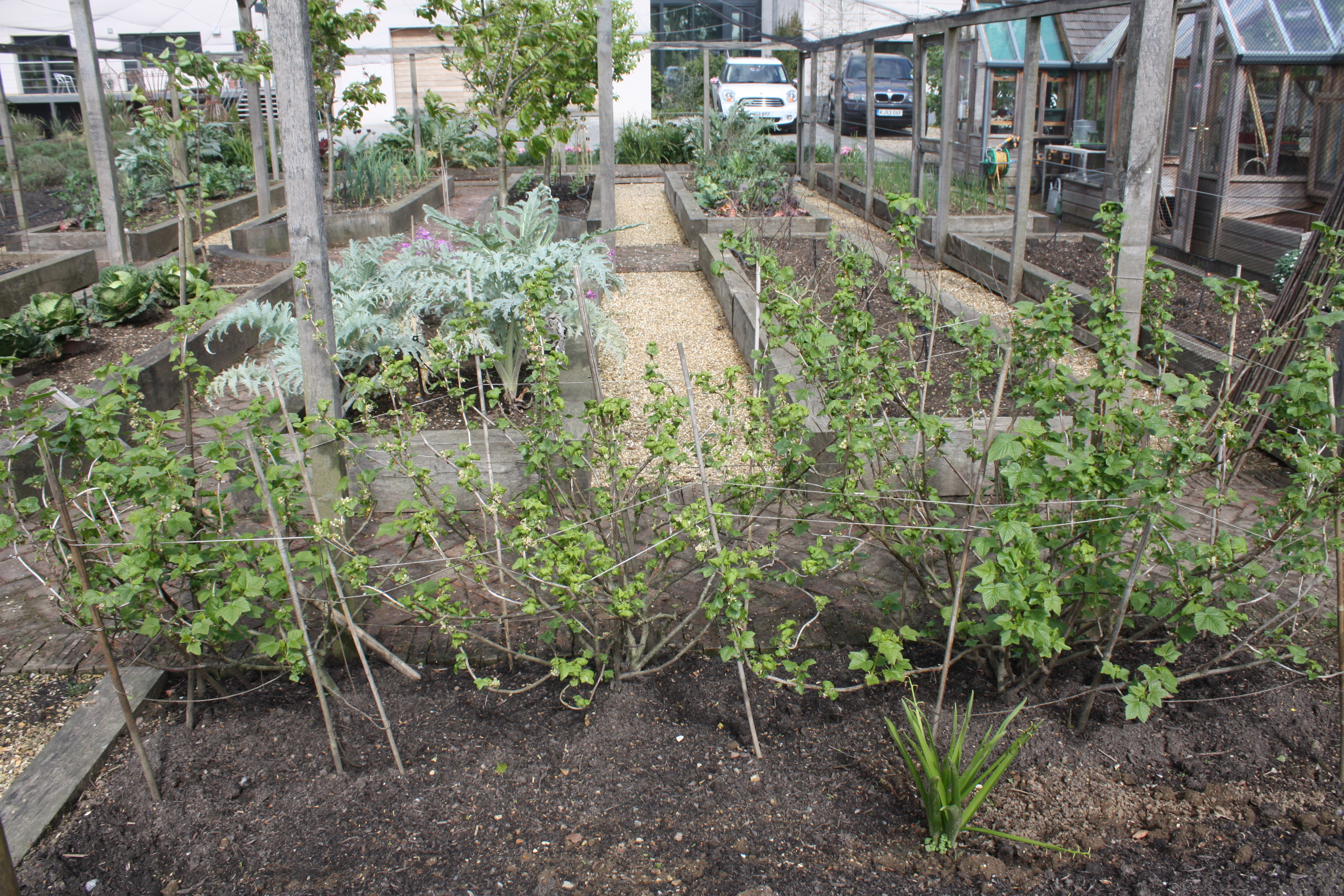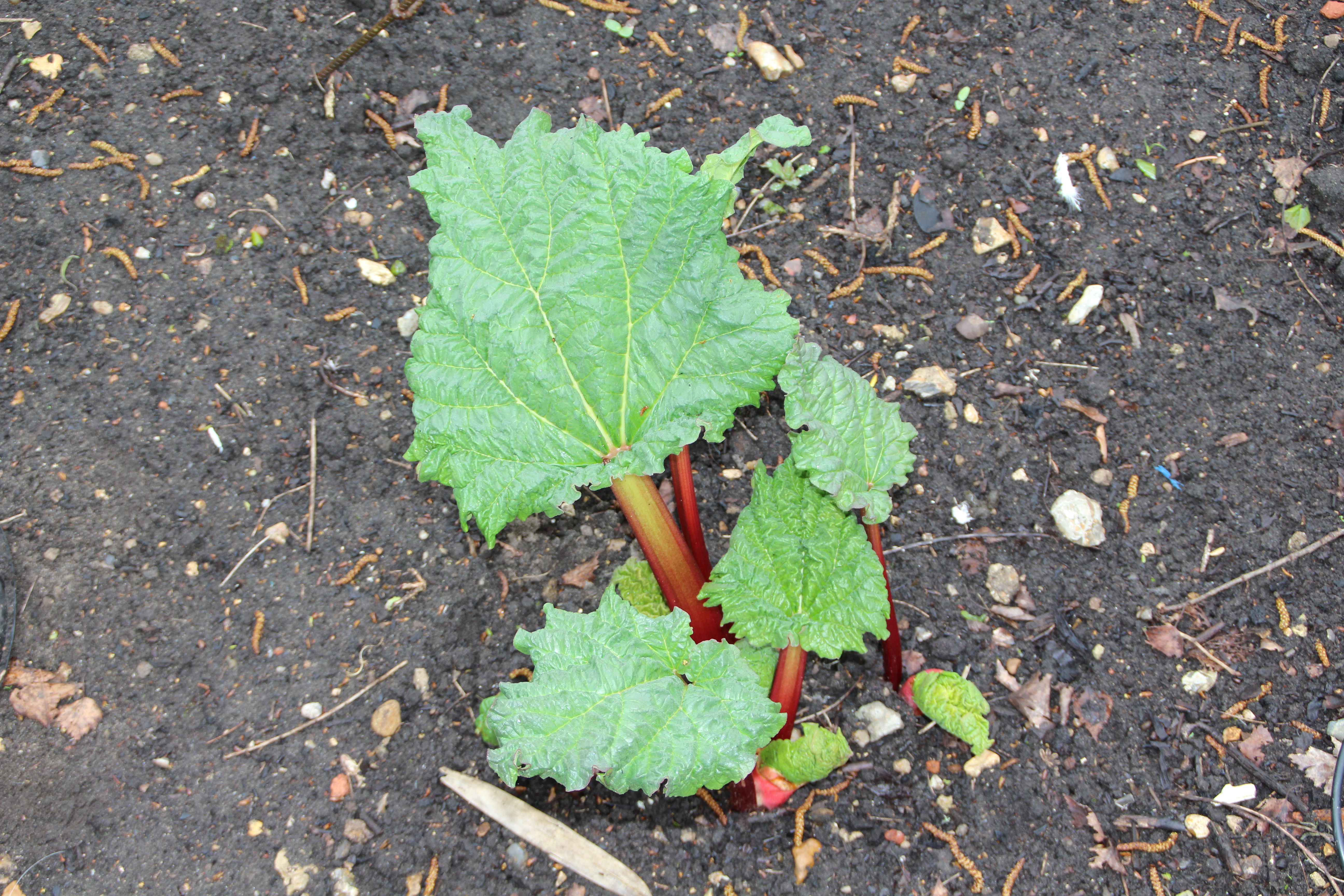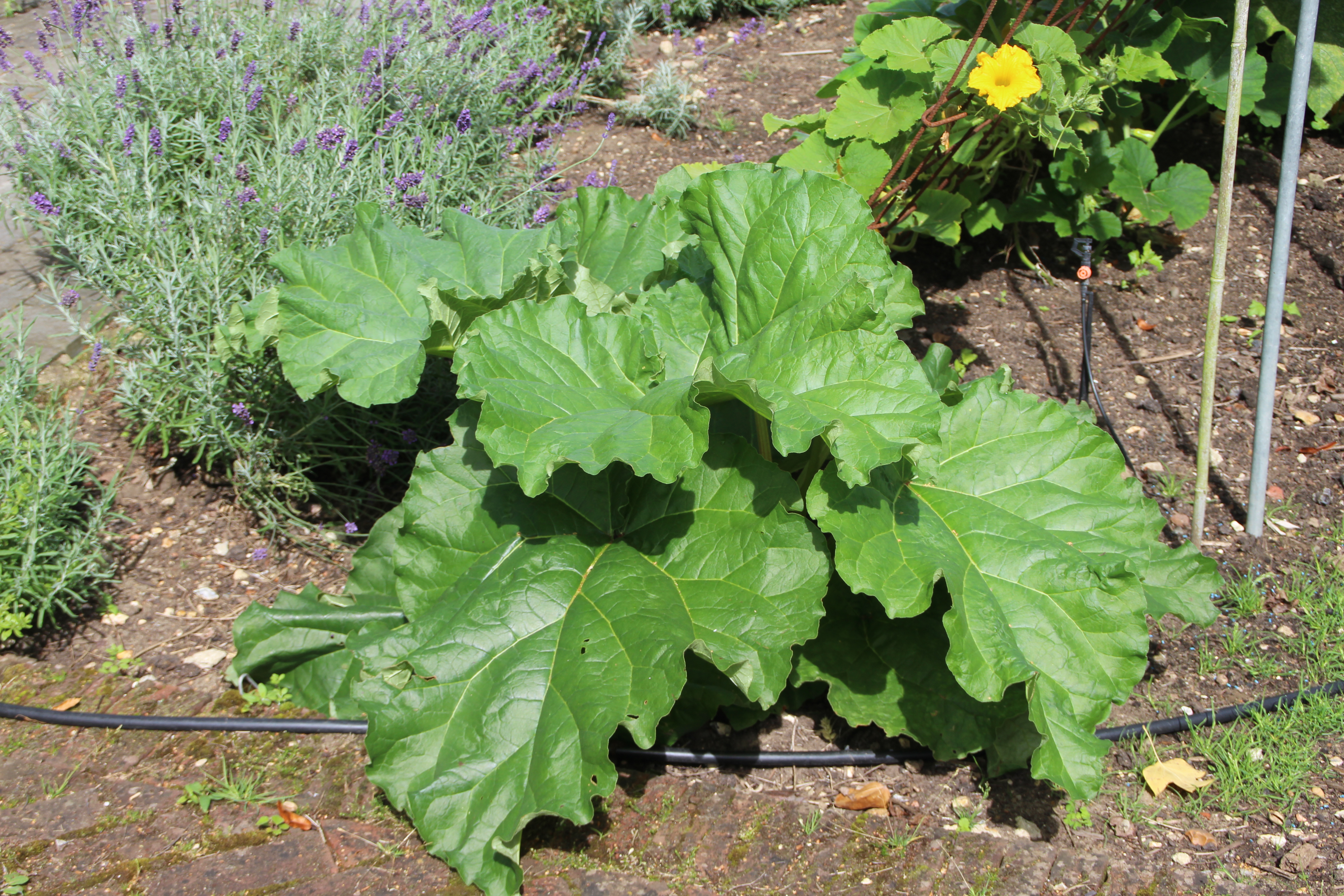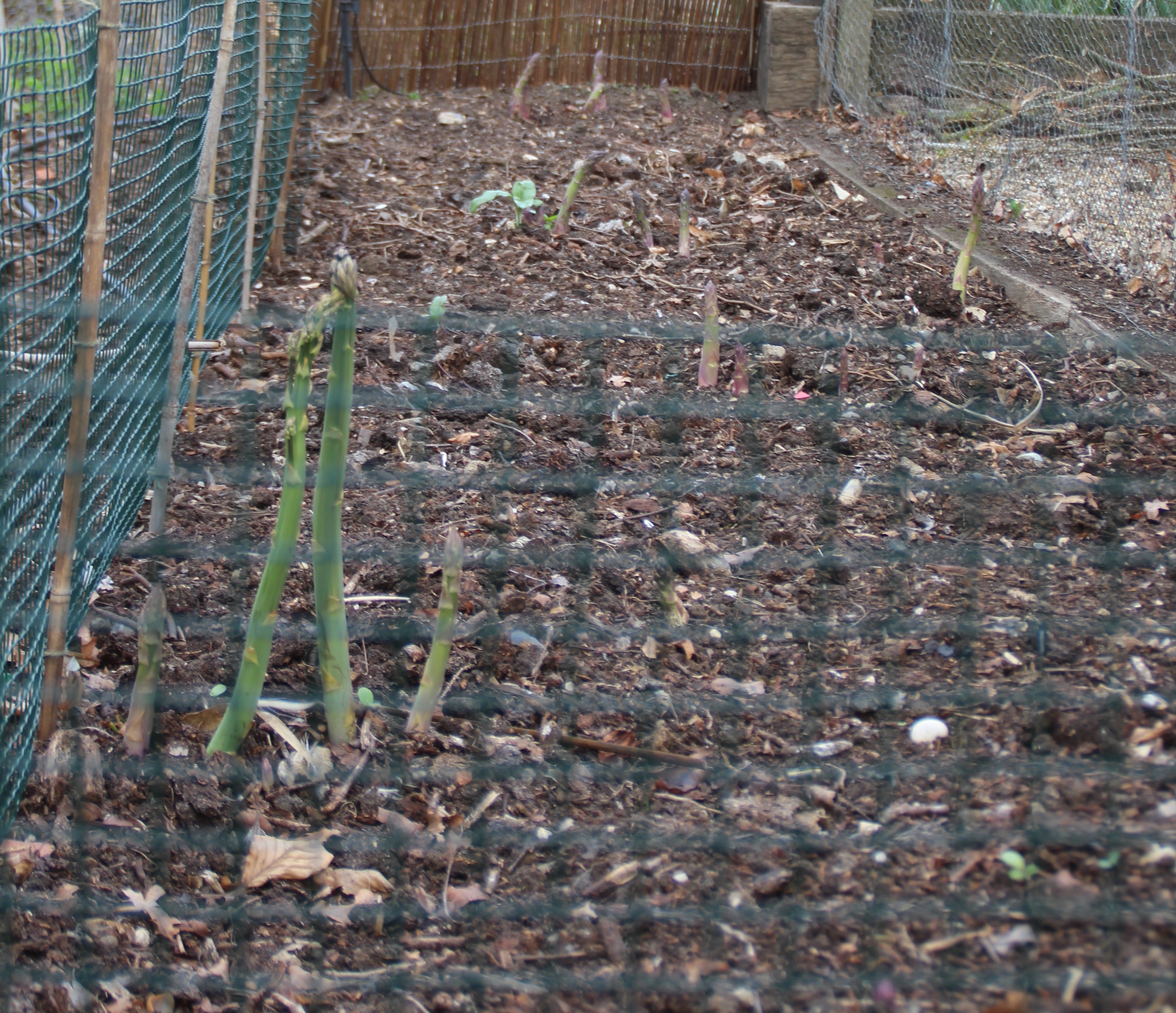March usually sees us pulling the first rhubarb of the year – always a treat; and this got us to thinking about perennial edible crops. March can be a good time of year to get these in the ground. An investment in initial ground preparation and a modest amount of ongoing maintenance gives crops for many years. There are two types of perennial edibles, woody ones like fruit bushes and herbaceous ones like asparagus.
You don’t need much space for some perennial crops. If you have room for a new shrub, then you have room for a fruit bush, equally a rhubarb plot of less than a metre squared can give large crops for a long time.
Currants and gooseberries are classic fruit bushes and are relatively easy to look after. They need light and airflow, so pruning is simply a matter of keeping the centre open and removing the oldest growth to maintain vigour. Ground preparation and planting is the same as for ornamental shrubs. Dig a wide, but not too deep planting hole in well weeded ground. You’re aiming to have a square hole about three times the size of the existing root ball and that will allow you to plant the bush at the same depth as it has been already. We don’t enrich the planting area as we want the roots to be pushing out looking for nutrients. Add a bit of mycorrhizal fungi on the roots and ensure regular watering for the first year.
Rhubarb prefers a shady spot that is either naturally moist or can be kept watered as rhubarb is a marginal bog plant. Unlike for woody bushes, we add plenty of bulky organic matter to the planting area for rhubarb to aid moisture retention. We suggest allowing a full year’s growth before starting to pull the stems. We don’t take too much in year two, but thereafter rhubarb will give large crops for years.
Asparagus is a bigger investment of time. It is generally three years before you get your first crops, but once you’ve started cropping then you’ll never want shop-bought asparagus again.
You can plant new crowns in either the autumn or the spring, but we have had most success with spring planting. Dig a trench and at the bottom create a mound over which you spread the roots of the asparagus crowns. Light, free draining soil is preferred. Keep the bed well-watered in the first year and make sure that you keep on top of the weeds as the first ferns are quite small and are easily out-competed. Once properly established the crowns spread and you’ll soon have an abundance of delicious produce.




